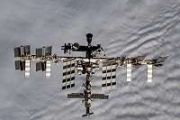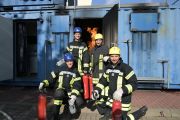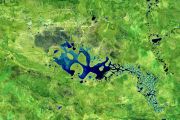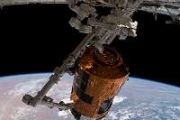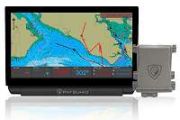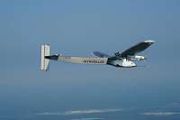
Copernical Team
US Space Force taps Space Micro to build GEO Lasercom Terminals
 Space Micro Inc., powered by Voyager Space, and a provider of digital, electro-optic and communications systems for satellites, deep space exploration and other space equipment, today announced an award from the U.S. Space Force, Space Systems Command for a contract to build a GEO-capable uLCT secure laser communications terminal. Under the contract, Space Micro plans to deliver a flight model t
Space Micro Inc., powered by Voyager Space, and a provider of digital, electro-optic and communications systems for satellites, deep space exploration and other space equipment, today announced an award from the U.S. Space Force, Space Systems Command for a contract to build a GEO-capable uLCT secure laser communications terminal. Under the contract, Space Micro plans to deliver a flight model t SmallSat launch company teams with C8 Secure for cybersecurity
 SmallSat launch services provider Vaya Space announced their strategic partnership with C8 Secure to provide turn-key cybersecurity solutions for the space industry. In addition, Vaya Space has agreed to provide launch services to Continent 8 Technologies, the parent corporation of C8 Secure, as they develop and implement plans to create a new satellite constellation to augment their global netw
SmallSat launch services provider Vaya Space announced their strategic partnership with C8 Secure to provide turn-key cybersecurity solutions for the space industry. In addition, Vaya Space has agreed to provide launch services to Continent 8 Technologies, the parent corporation of C8 Secure, as they develop and implement plans to create a new satellite constellation to augment their global netw Got a hitch in our giddyup - Sols 3437-3438
 We successfully drove further down off of the "Greenheugh pediment" as we head toward smoother driving pathways downhill. However, the chaotic jumble of terrain we encountered in the final few rolls of our wheels left a couple of our wheels perched awkwardly.
That meant we could not get out the arm for contact science, lest our large arm swinging around cause the rover to shift unexpectedl
We successfully drove further down off of the "Greenheugh pediment" as we head toward smoother driving pathways downhill. However, the chaotic jumble of terrain we encountered in the final few rolls of our wheels left a couple of our wheels perched awkwardly.
That meant we could not get out the arm for contact science, lest our large arm swinging around cause the rover to shift unexpectedl UCF part of historic civilian space flight to ISS
 When the first four civilians travel to the International Space Station April 8 they will be working with a team of University of Central Florida doctors to study how space travel affects the human body, particularly the eyes and brain.
Three faculty physicians at UCF Health, the College of Medicine's clinical practice, are collaborating with Axiom Space and two Israeli medical centers - S
When the first four civilians travel to the International Space Station April 8 they will be working with a team of University of Central Florida doctors to study how space travel affects the human body, particularly the eyes and brain.
Three faculty physicians at UCF Health, the College of Medicine's clinical practice, are collaborating with Axiom Space and two Israeli medical centers - S Arianespace wins new contract to launch Sentinel-1C observation satellite on board Vega-C
 Arianespace has been awarded a launch contract by the European Space Agency (ESA) on behalf of the European Commission, to launch Sentinel-1C in the first half of 2023 on Vega-C. The satellite, weighing around 2.3 metric tons, will be placed in a Sun-synchronous orbit with an altitude around 690 km.
"We are very proud of this new launch contract for the European Commission and the European
Arianespace has been awarded a launch contract by the European Space Agency (ESA) on behalf of the European Commission, to launch Sentinel-1C in the first half of 2023 on Vega-C. The satellite, weighing around 2.3 metric tons, will be placed in a Sun-synchronous orbit with an altitude around 690 km.
"We are very proud of this new launch contract for the European Commission and the European US Space Force releases decades of Bolide Data to NASA for Planetary Defense Studies
 An agreement between NASA and the U.S. Space Force recently authorized the public release of decades of data collected by U.S. government sensors on fireball events (large bright meteors also known as bolides) for the benefit of the scientific and planetary defense communities. This action results from collaboration between NASA's Planetary Defense Coordination Office (PDCO) and the U.S. Space F
An agreement between NASA and the U.S. Space Force recently authorized the public release of decades of data collected by U.S. government sensors on fireball events (large bright meteors also known as bolides) for the benefit of the scientific and planetary defense communities. This action results from collaboration between NASA's Planetary Defense Coordination Office (PDCO) and the U.S. Space F 'Moon landing' performed with DLR Robotic Motion Simulator
 How will astronauts land safely on the Moon in the future? A seamless interaction between pilot and spacecraft is crucial to ensuring a successful Moon landing. Together with partners from industry and research, the German Aerospace Center (Deutsches Zentrum fur Luft- und Raumfahrt; DLR) has conducted a special experiment. European Space Agency (ESA) astronaut and test pilot Roberto Vittori has
How will astronauts land safely on the Moon in the future? A seamless interaction between pilot and spacecraft is crucial to ensuring a successful Moon landing. Together with partners from industry and research, the German Aerospace Center (Deutsches Zentrum fur Luft- und Raumfahrt; DLR) has conducted a special experiment. European Space Agency (ESA) astronaut and test pilot Roberto Vittori has Virgin Orbit to launch maritime data satellite from the UK
 Virgin Orbit has announced an agreement with The Satellite Applications Catapult (The Catapult) to launch the latest satellite in The Catapult's In-Orbit Demonstration (IOD) programme into space from the UK later this year.
The satellite, called Amber-1, is a partnership between The Catapult and Horizon Technologies. Built by AAC Clyde Space in Scotland, it will be launched by Virgin Orbit
Virgin Orbit has announced an agreement with The Satellite Applications Catapult (The Catapult) to launch the latest satellite in The Catapult's In-Orbit Demonstration (IOD) programme into space from the UK later this year.
The satellite, called Amber-1, is a partnership between The Catapult and Horizon Technologies. Built by AAC Clyde Space in Scotland, it will be launched by Virgin Orbit NASA's Curiosity Mars rover reroutes away from 'Gator-Back' rocks
 NASA's Curiosity Mars rover spent most of March climbing the "Greenheugh Pediment" - a gentle slope capped by rubbly sandstone. The rover briefly summited this feature's north face two years ago; now on the pediment's southern side, Curiosity has navigated back onto the pediment to explore it more fully.
But on March 18, the mission team saw an unexpected terrain change ahead and realized
NASA's Curiosity Mars rover spent most of March climbing the "Greenheugh Pediment" - a gentle slope capped by rubbly sandstone. The rover briefly summited this feature's north face two years ago; now on the pediment's southern side, Curiosity has navigated back onto the pediment to explore it more fully.
But on March 18, the mission team saw an unexpected terrain change ahead and realized First private mission readies for launch to ISS
 The first fully private mission to the International Space Station is set to blast off Friday with a four-member crew from startup company Axiom Space.
The partnership has been hailed by NASA, which sees it as a key step in its goal to commercialize the region of space known as "low Earth orbit," leaving the agency to focus on more ambitious endeavors deeper into the cosmos.
Takeoff is s
The first fully private mission to the International Space Station is set to blast off Friday with a four-member crew from startup company Axiom Space.
The partnership has been hailed by NASA, which sees it as a key step in its goal to commercialize the region of space known as "low Earth orbit," leaving the agency to focus on more ambitious endeavors deeper into the cosmos.
Takeoff is s 


